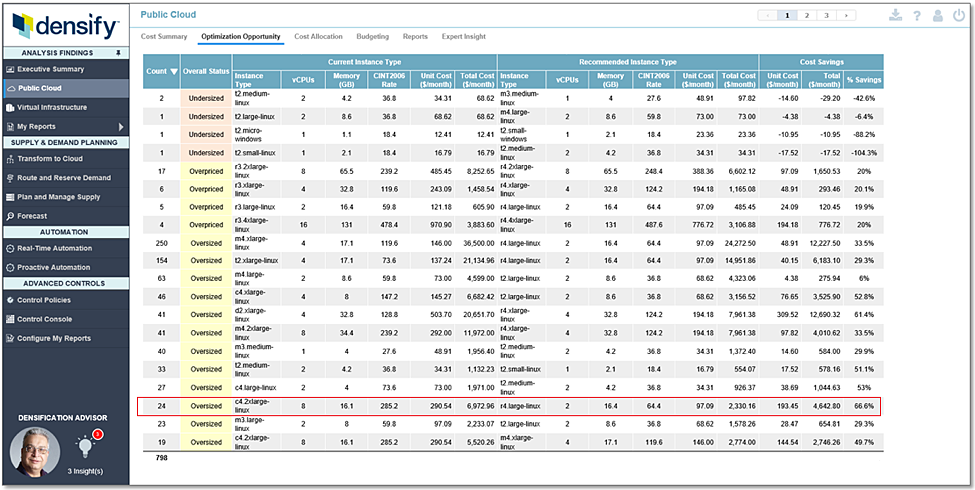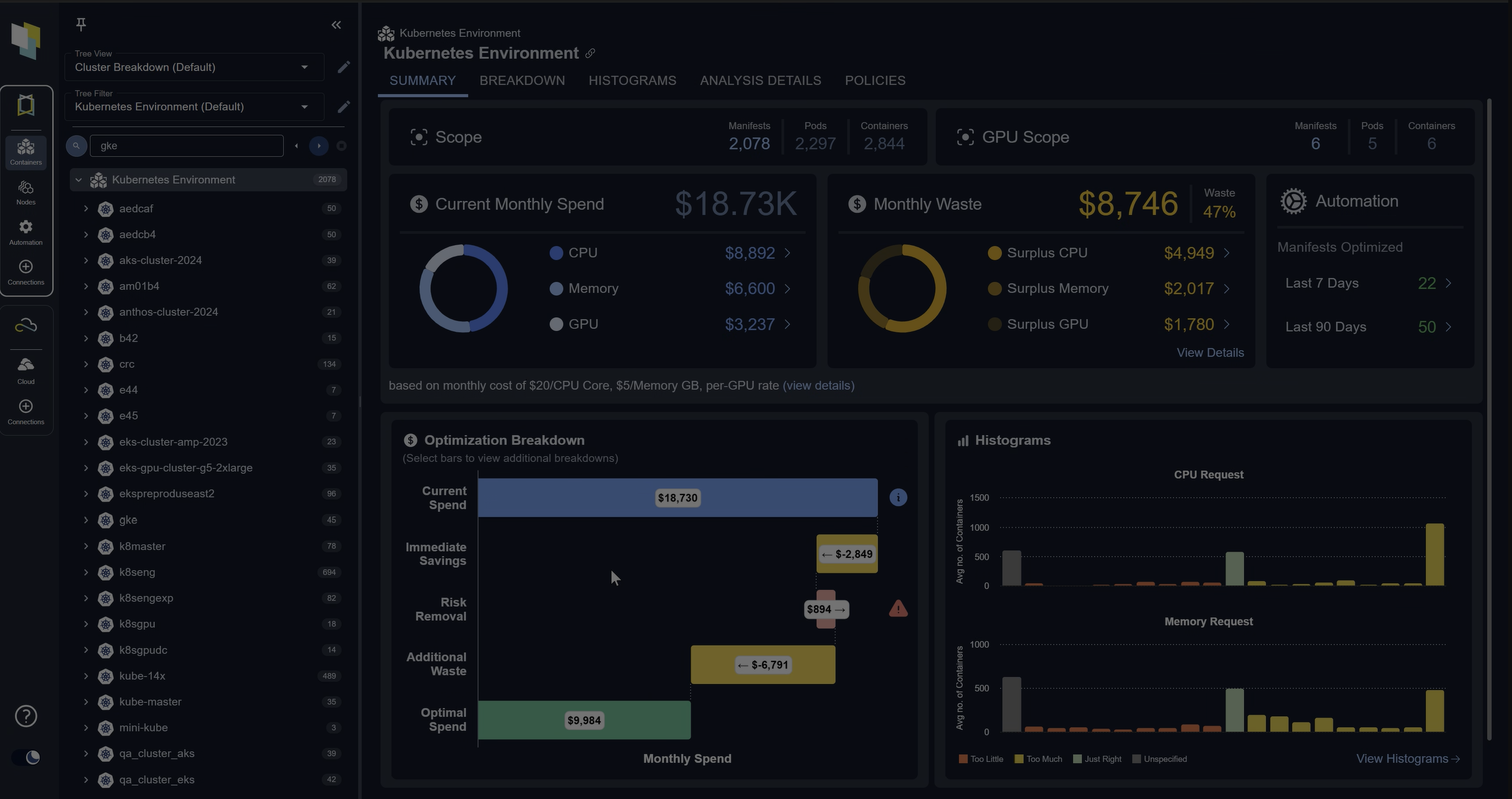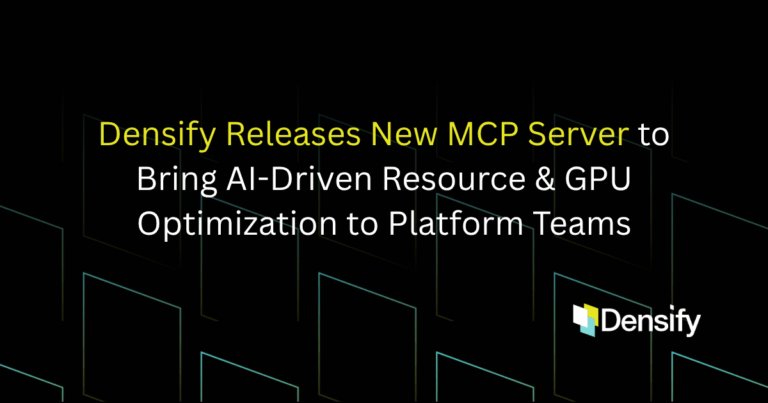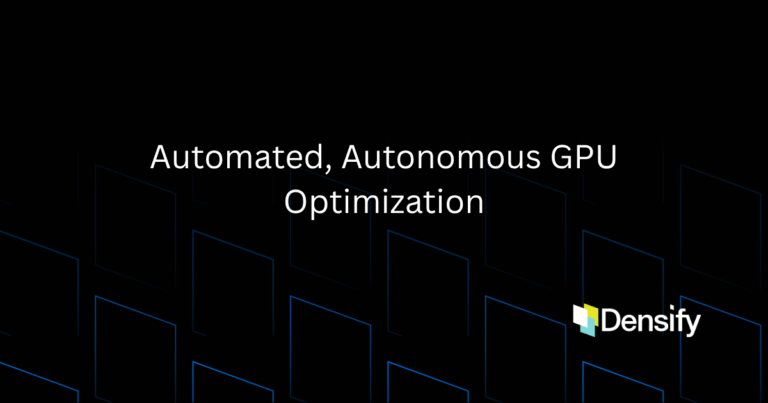In previous blog posts we’ve discussed the challenges organizations face in choosing the right cloud instances, and how understanding workload patterns is critical to right-sizing public cloud instances for optimal CPU and memory efficiency. In this post, we’ll look at a key aspect of instance selection that plays a critical role in optimizing AWS, Azure, and Google Cloud spend: modernizing your instances.
Modernizing public cloud instances is the act of moving from an existing type of instance to a newer version of that offering. Newer instance types are often hosted on newer hardware, which typically offer higher performance and better processing power. Just like on-prem virtual environments, more powerful hardware enables you to get more bang for your cloud resource buck. Our experience has shown that when you both modernize and right-size your instances, cost savings average 41% — approximately double the savings that right-sizing alone delivers.
So why are many companies spending 40% more than they have to?
It all comes down to the complexity of cloud offerings hindering the ability to make the right decision. All the big public cloud vendors offer a dizzying array of services and instance types to meet a variety of computing needs. None more so than Amazon Web Services (AWS). According to analysts AWS offers more one million configuration combinations within EC2 alone and has made more than 50 pricing changes in the last 10 years. Given this complexity, choosing the right instance is like finding a needle in a haystack.
And that haystack is constantly changing. Public cloud vendors are continually introducing new instance offerings with different CPU, memory and I/O combinations. And with the increases in power of the underlying hardware and pricing changes that often occur, one of these new offerings may satisfy your workload needs in a way that’s more cost-efficient. But it’s up to you to find that out. Just as your mobile phone service provider doesn’t contact you to alert you to a plan that will save you money (and cost them revenue), the cloud vendors don’t either.
With so many instance combinations and offerings, how do you identify the best choice for each of your current workload requirements? To seize that opportunity, you need analytics that can accurately compare apples to apples in the world of hardware platforms. To know how an AWS m3 large compares to an m4 large, or how an m4 extra large compares to an r4 large, requires analytics that use benchmarks to normalize the data and workloads between platforms. It’s only by leveraging benchmarks that you can accurately compare different instance classes and types to truly make the right decisions.
These analytics must also factor in the cost of the various offerings so they can accurately calculate and optimize the financial impact as well as the performance side. And, as we discussed in the first blog of this series, you still need analytics that understand your workload patterns, to effectively match application requirements to the appropriate instances. This is no simple task, but with this insight, you can identify instances that deliver equal or greater application performance at a lower cost.
Cloud Workload Pattern Analysis Can Identify Savings Opportunities
In the example below, benchmarking and workload pattern analysis has enabled us to identify four opportunities to modernize instances at a cost savings of 20% per instance—for total estimated monthly savings of more than $2,800, or more than $34,000 per year. Note that these savings are over and above the economies achieved by simply downsizing instances. Icing on the cake that can really add up.
Right-sizing coupled with modernizing delivers significant cost savings over right-sizing alone, but requires utilization data to be normalized using benchmarks to accurately compare two hosting environments running different hardware.
Do you have cloud applications that were deployed several months ago and may be candidates to move to newer, more cost-efficient instances? Are you regularly including modernization in your right-sizing strategy?
In the next blog post, we’ll look at another commonly overlooked issue that can lead to cloud overspending: “deadwood” instances.
More in this Series
This post is part of a series of five articles on how to reduce public cloud costs by choosing the right instances from public cloud vendors such as AWS, Azure, IBM, and Google.






